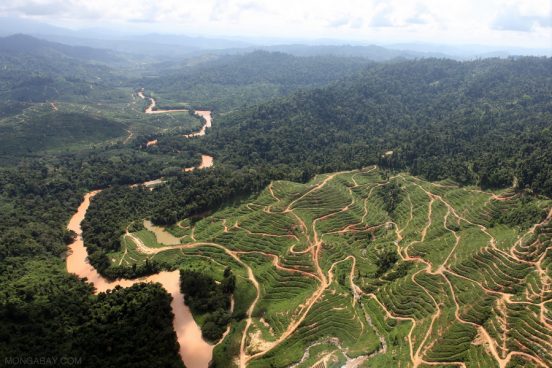During some classes we came across the topic of palm oil, however we’ve never dived into this highly debated topic. Of course I knew palm oil especially the sourcing of palm oil wasn’t very sustainable, but I never asked why. Consequently this post should summaries some relevant issues around palm oil.
First we need to take a look at the production of palm oil. Palm oil is sourced from the palm fruit, which grows on palm oil trees in tropical areas. It offers a greater yield at lower costs than any other vegetable oil. One tree is able to produce 40kg of palm oil annually. In order to satisfy the need of palm oil, which makes up 183 650 000 tones every year, 4.59 billion trees are needed. According to the palm oil research platform, the production of 1 tone of oil takes up 0,26 hectares, which results in 47.749.000 hectares or 477.490 km2 to produce the necessary amount. As a comparison Yukon is 482.443km2 big.
Indonesia and Malaysia (87% share of global palm oil production) are the main production countries, which came to the expenses of the rain forest. As a consequence many endangered plants and animals has been taken at risk. In particular elephants, tigers, rhinos and orangutans are endangered in Indonesia and Malaysia. In addition the production of palm oil causes server soil erosion, air, soil and water pollution (more information at WWF homepage).
Can we as customer escape palm oil? In which products do we find it?
You can find palm oil in various products from dairy products over cosmetic products and shampoos. In order to understand why palm oil is needed in so many products WWF offers information on the following homepage: https://www.worldwildlife.org/pages/which-everyday-products-contain-palm-oil.
Nevertheless there are various websites, which help to identify products without palm oil like: http://www.palmoilfreeproducts.com.au/
Or consumers can inform themselves about “sustainable” sourced palm oil by looking at certificates like RSPO or Green Palm. These labels certify palm oil production, which manufactures with respect for natural resources and protects forests, rivers and wildlife.




kiannab
April 2, 2017 — 4:28 pm
I’m glad you chose to write about this topic! I believe palm oil is one of the components of such a range of products that most consumers find hard to avoid. I wasn’t aware of the certification labels associated with palm oil, but hopefully these added labels will help consumers change their purchasing decisions.
LucyStephenson
April 10, 2017 — 8:52 am
Palm Oil is such a prevalent problem that should have a solution by now. I just wrote my last blog post about palm oil as well, and whenever I think about it it makes my blood boil. I went to Indonesia many times while I was living in Asia and spent a significant amount of time in Borneo in the rainforest. Thinking about the degradation that must have taken place there over the last few years while consumerist culture is on a rapid uprising is just heartbreaking. Everyone agrees that Palm Oil is bad, dangerous and evil, but no one is doing anything. Possible corruption? Exploitation? lack of Government regulation?